Global Journal of Ecology
Aedes (Stegomyia) albopictus in rural areas in Brazil: First Record in the State of Ceara
Estelita Lima Cândido1*, Ulisses Mariano da Silva2, Angélica Rodrigues de Souza Costa1, Elayne Eally Silva de Oliveira Morais1, Gledson Micael da Silva Leite3 and Carlos Wagner Oliveira1
2Cariri Medical Entomology Center, Juazeiro do Norte, CE, Brazil
3Postgraduate Program in Health Sciences, Federal University of Cariri (UFCA), Juazeiro do Norte, Brazil
Cite this as
Cândido EL, da Silva UM, de Souza Costa AR, de Oliveira Morais EES, da Silva Leite GM, et al. (2023) Aedes (Stegomyia) albopictus in rural areas in Brazil: First Record in the State of Ceara. Glob J Ecol 8(2): 097-102. DOI: 10.17352/gje.000088Copyright
© 2023 Cândido EL, et al. This is an open-access article distributed under the terms of the Creative Commons Attribution License, which permits unrestricted use, distribution, and reproduction in any medium, provided the original author and source are credited.Background: This work aims to describe the finding of Aedes albopictus in an intra- and peridomiciliary area of the rural area in the south-central region of Ceará and discuss the need for entomological surveillance of this species in the country.
Method: Through traps installed in an intra- and peridomiciliary environment and artificial breeding grounds, eggs and larvae of Ae. albopictus were captured in a rural area of the state of Ceará.
Results: This is the first record of Ae. albopictus in the south-central region of the state of Ceará. We collected 418 eggs and 252 larvae from Ae. albopictus, being 85% of eggs in the peridomiciliary area, on average 29.41 (± 37.34) eggs per trap. As for larvae, about 70% of them were caught on tires. Only 42 larvae (14,2%) belonged to species other than the genus Aedes, found in tires and an engine.
Conclusion: The presence of Ae. albopictus in rural areas close to urban areas warns of the need to effectively insert this vector as a surveillance target, carry out an active search, monitor its presence in municipalities, and investigate its involvement with outbreaks in or near areas where they are present.
Introduction
Aedes albopictus is one of the main vectors of arbovirus that threaten public health in the world, Dengue (DENV), Yellow fever (FA), Zika (ZIKV), and Chikungunya (CHIKV) [1]. In Brazil, several studies have demonstrated their ability to acquire these viruses and transmit them to their offspring [2-4], classifying them as vector potential. Studies conducted with natural populations of Ae. albopictus detected the presence of DENV in pools from different Brazilian regions and states, [5-8], natural ZIKV infection in eggs and adult females collected in the states of Bahia and Espírito Santo [8,9]. During an epidemic outbreak in areas near an urban park of the Atlantic Forest, Natal-RN CHIKV was identified in adults [4].
Ae. albopictus was registered in Brazil for the first time in 1986, in the state of Rio de Janeiro [10] and, since then, has been conquering more and more space. It is currently present in all states, more widely distributed in the Southeast and Midwest regions [11].
In the state of Ceará, the vector was first found in 2005 in the city of Fortaleza, the capital of the state [12] and subsequently, other records continued to be made, but always in the same municipality. In the countryside of the state, its state of distribution, density, and involvement in the transmission of arboviruses in these areas is unknown [13-15].
This work aims to describe the finding of Aedes albopictus in an intra- and peridomiciliary area of the rural area in the south-central region of Ceará and discuss the need for entomological surveillance of this species in the country.
Methods
Characterization of the area
The study area comprises the rural area of the municipality of Lavras da Mangabeira, located in the mesoregion of south-central Ceará, about 434 km from the capital Fortaleza (Figure 1). The total population is 31,090 inhabitants, being in the urban area 18,132 (60%) and 12,958 (40%) in the rural area, with a total area of 947.95 km2, corresponding to a demographic density of 32.8 inhabitants/km2. The average annual temperature is 27 °C, with the rainy season varying from January to April and the average rainfall is 866.4 mm per year [16].
Mosquito captures
During a field visit in early April 2022, the presence of mosquitoes with characteristics of the genus Aedes was detected when they sought blood repast from visitors. Three larvitraps produced with disposable plastic bottles, containing about 300 mL of water were installed on site, a peridomiciliary area rich in vegetation, and organic matter, with a low incidence of sunlight and presence of porcine.
The traps were collected seven days later and were all positive. The contents were taken to the Cariri Medical Entomology Laboratory for identification. 40 larvae were counted and identified according to the classification key provided by Consoli and Lourenço-de-Oliveira (1994) [17]. All specimens were identified as Ae. albopictus.
After the identification of the species, new visits were made to the same area in the same month, including the selection of new points for collection. This time, ovitraps composed of a black pot containing about 300 mL of water and a eucatex reed measuring 3x12 cm for oviposition were installed. The traps were installed inside two residences (Res), equidistant 1.5 km, in addition to the peridomiciliary area, and collected five days after their installation. In each residence (Res 1: 6.79076589°S; 39.10096783°W) and (Res 2: 6.7793123°S; 39.0929763°W) six traps were distributed, three mounted in the intradomiciliary area and three in the peridomiciliary area. In Res 2, the peridomiciliary points consisted of porcine and goat stables (Figure 2).
These points are at about 277 m in height, around the Mescla stream, which is part of the drainage network of the Salgado River sub-basin, a tributary of the Jaguaribe River Basin (Figure 3). The circled points correspond to the flight radius of Ae. albopictus which can reach up to 800 m [15].
During the second field visit for the installation of the ovitraps, two outbreaks of larvae were found in artificial breeding sites closer to Res 1. The first, in a tractor tire with clear water, and the other in the engine of the same equipment, with a layer of oil on the water. The distance from this focus to the residence was about 5 meters.
Data analysis
Data were tabulated and analyzed using GraphPad Prism software. The number of eggs collected in the traps (three in the intradomicile) and (three in the peridomicile) installed at each visit was summed and presented in a table. The average of eggs per trap was calculated for each area and presented graphically. To compare the two samples (intradomiciliary and peridomiciliary area), the Mann-Whitney U test was applied at a significance level of 0.05. The number of larvae collected was counted separately and presented graphically, distributed by type of breeding.
Results
The materials collected in the ovitraps and foci were taken to the laboratory, where they were quantified and identified. Figure 4 shows important characteristics for the identification of Ae. albopictus.
Figure 5 shows the number of eggs captured during the visits. In all, 418 eggs were collected in intra and peridomiciliary areas, with an average of 16.25 (± 19.93); 88.25 (± 80.20) eggs per area, respectively, and with an average of 5.50 (± 10.14), and 29.41 (± 37.34) eggs per trap, respectively. Although the number of eggs collected in the peridomiciliary area represents approximately 85% of the total, there is no evidence to indicate a statistically significant difference between the two samples (p = 0.0833).
In the artificial breeding sites (trap, tire, and motor) 294 larvae were counted, of which 252 (85.7%) of Ae. albopictus. Among the larvae of another species, only one was Culex and the others were not identified but did not have characteristics of the genus Aedes. The largest number of larvae was collected on tyres (175 u), predominantly Ae. albopictus with 76.5% of them (Figure 6). Considering the number of eggs and larvae collected, 670 specimens were counted.
Discussion
It is believed that Ae. albopictus is spread in at least 59% of Brazilian municipalities [8,18,19] leaving the remaining portion unaware of its local presence. This information is produced from research conducted for the purpose of active search or should be collected during the Rapid Index Survey for Ae. aegypti (LIRAa), carried out by endemic agents. The Ministry of Health advises conducting a bimonthly sample larval survey, or four LIRAa per year in-home visits. This survey is used to monitor and subsidize the control of mosquito infestation Aedes, identifying more infested areas in the territory and thus predicting the occurrence of outbreaks [20].
It occurs that these surveys have been suffering recurrent questions as to their effectiveness in predicting the risk of epidemic transmission and the weaknesses identified during their execution, either due to lack of knowledge or professional commitment [21]. Thus, in order for the presence of Ae. albopictus to be detected during LIRAa, technical training is required and these conditions must be provided by the state. As Figure 4 explains, most of the biological characteristics that differentiate the two vectors are microscopic and require technical knowledge to perform this task. Therefore, if there is no efficient identification of mosquitoes during these surveys, there is no way to estimate the infestation rate of Ae. aegypti or Ae. albopictus.
On the other hand, despite the proven vector transmission competence of Ae. albopictus in Brazil, all the attention of the control program is still focused on Ae. aegypti. There is no mention of another vector in documents, guidelines, plans, and control strategies. This finding can be corroborated by the example of a robust international project carried out in the country, which aims to introduce into the field Ae. aegypti with Wolbachia, a bacterium that prevents Dengue, Zika, Chikungunya, and Urban Yellow Fever viruses from developing within it, contributing to the reduction of these diseases [22] in the population.
It is important to note that there is no criticism of an important action against Ae. aegypti. It is necessary to alert to the need to implement surveillance measures of Ae. albopictus in Brazil, because without them, mosquitoes and arbovirus transmission will continue to expand silently, and may be co-responsible for the high incidences of arboviruses in recent years. It should also be considered that, in addition to the urban environment, this mosquito disperses easily in the rural, semi-wild, and wild environments, not depending on the places of great human concentration to reproduce, such as Ae. aegypti, and it also withstands lower temperatures [14].
Garcia-Rejon, et al. (2021) [23] refer that Ae. albopictus is an invasive mosquito with wide phenotypic plasticity to adapt to new areas and high vector competence to transmit several arboviruses, mainly by transovarial transmission. Thus, it can participate in the endemic spread of diseases, and it serves as a bridge vector for emerging arboviruses between wild, rural, and urban areas. In Brazil, the detection of DENV-3 in males of Ae. albopictus was carried out in periods without registration of autochthonous cases with this serotype, suggesting that the silent circulation of the virus may occur by this type of mechanism [3]. In the State of Rio de Janeiro, where the yellow fever virus was isolated in females of Ae. albopictus, a study suggested that the mosquito may have acted as an additional vector from wild or rural areas to the urban area [24].
In females and males of Ae. albopictus, CHIKV was identified in areas at the epicenter of an epidemic outbreak that occurred in people living near an urban park of the Atlantic Forest, located in Natal-RN [4]. Rezende, et al. (2020) [8] reported the first finding of Ae. albopictus specimens infected with DENV-1 and ZIKV during an outbreak of dengue-like disease in a rural area in the state of Espírito Santo.
Based on the information showcased, it is clear that the rural area cannot be neglected. Therefore, it is necessary to have access to the same entomological surveillance services offered in the urban area so that the false idea of the non-existence of Ae. aegypti or Ae. albopictus in the rural area is not created, since, especially, in those located close to the cities, there are no barriers that prevent the proliferation of vectors, especially because there is a daily flow of people moving between one area and another in busing school, commercial, medical-hospital and leisure services. Residents can become infected in the city and introduce the virus to the site, where the vector already circulates.
Rural communities close to urban centers often present consumption and packaging disposal behaviors similar to those of the city. However, the aggravating factor is that according to the 2019 National Rural Sanitation Program (PNSR), in these areas, only 55.6% of people have adequate service to water supply; 37.5% to sanitary sewage service, and 44.8% to solid waste management [25]. The inadequate coverage of these essential services can provide several breeding grounds for mosquitoes, as was recorded in this work. The lack of piped water, for example, induces inadequate water storage and, consequently, the supply of artificial breeding sites, favoring the proliferation of vectors.
The presence of Ae. albopictus in the intradomiciliary environment in the rural area suggests its domiciliation and alert to the risks of transmission of the viruses conveyed by it since several studies indicate its vector competence [23]. The predominance observed in the peridomiciliary area is corroborated by the vector's own ecological characteristics in wild environments, which exceed those of Ae. aegypti. Their blood-feeding pattern observed in studies carried out in the United States and Brazil indicated that these mosquitoes are opportunistic, as DNA from humans, wild, and domestic animals was found in the mosquito's blood meal [26,27]. In the present study, the area peridomiciliar where the traps were installed offered varied sources of food, such as mammals (humans, porcine, goats, and dogs) and various birds. Melo, et al. [4] found a predominance of Ae. albopictus over Ae. aegypti in an urban park in Brazil. It is important to investigate whether the same occurs in other Brazilian locations.
Conclusion
In the present study, even in small numbers, other insect larvae share the same breeding ground as Ae. albopictus, but none of Ae. aegypti, were observed perhaps because the rural area presents characteristics that favor the Ae. albopictus. This reinforces the need to effectively consider this vector as a surveillance target, perform an active search, and monitor its presence to know the real situation of vector infestation in the country. In addition, it is recommended to search for arboviruses in Ae. albopictus captured in areas with arboviruses and in their vicinity.
The authors would like to thank the Programa de Desenvolvimento Regional Sustentável - PRODER/UFCA, and the National Council for Scientific and Technological Development (CNPq).
The proof has some formatting problems. Some paragraphs without recuo and others unlined.
- Lwande OW, Obanda V, Lindström A, Ahlm C, Evander M, Näslund J, Bucht G. Globe-Trotting Aedes aegypti and Aedes albopictus: Risk Factors for Arbovirus Pandemics. Vector Borne Zoonotic Dis. 2020 Feb;20(2):71-81. doi: 10.1089/vbz.2019.2486. Epub 2019 Sep 26. PMID: 31556813; PMCID: PMC7041325.
- Ferreira-de-Lima VH, Lima-Camara TN. Natural vertical transmission of dengue virus in Aedes aegypti and Aedes albopictus: a systematic review. Parasit Vectors. 2018 Feb 1;11(1):77. doi: 10.1186/s13071-018-2643-9. PMID: 29391071; PMCID: PMC5793400.
- Ferreira-de-Lima VH, Andrade PDS, Thomazelli LM, Marrelli MT, Urbinatti PR, Almeida RMMS, Lima-Camara TN. Silent circulation of dengue virus in Aedes albopictus (Diptera: Culicidae) resulting from natural vertical transmission. Sci Rep. 2020 Mar 2;10(1):3855. doi: 10.1038/s41598-020-60870-1. PMID: 32123282; PMCID: PMC7052239.
- de Melo Ximenes MFF, de Araújo Galvão JM, Inacio CLS, Macêdo E Silva VP, Pereira RLDN, Pinheiro MPG, de Medeiros Silva MM, Gomes CES. Arbovirus expansion: New species of culicids infected by the Chikungunya virus in an urban park of Brazil. Acta Trop. 2020 Sep;209:105538. doi: 10.1016/j.actatropica.2020.105538. Epub 2020 May 23. PMID: 32454032.
- de Figueiredo ML, de C Gomes A, Amarilla AA, de S Leandro A, de S Orrico A, de Araujo RF, do S M Castro J, Durigon EL, Aquino VH, Figueiredo LT. Mosquitoes infected with dengue viruses in Brazil. Virol J. 2010 Jul 12;7:152. doi: 10.1186/1743-422X-7-152. PMID: 20624314; PMCID: PMC2913956.
- Martins VP, Silveira DA, Ramalho IL. Aedes albopictus in Brazil: ecological aspects and risks of dengue transmission. Entomotropic: An international journal for the study of tropical entomology. 2013; 28(2):75-86.
- Medeiros AS, Costa DMP, Branco MSD, Sousa DMC, Monteiro JD, Galvão SPM, Azevedo PRM, Fernandes JV, Jeronimo SMB, Araújo JMG. Dengue virus in Aedes aegypti and Aedes albopictus in urban areas in the state of Rio Grande do Norte, Brazil: Importance of virological and entomological surveillance. PLoS One. 2018 Mar 13;13(3):e0194108. doi: 10.1371/journal.pone.0194108. PMID: 29534105; PMCID: PMC5849307.
- Ricas Rezende H, Malta Romano C, Morales Claro I, Santos Caleiro G, Cerdeira Sabino E, Felix AC, Bissoli J, Hill S, Rodrigues Faria N, Cardoso da Silva TC, Brioschi Santos AP, Cerutti Junior C, Vicente CR. First report of Aedes albopictus infected by Dengue and Zika virus in a rural outbreak in Brazil. PLoS One. 2020 Mar 12;15(3):e0229847. doi: 10.1371/journal.pone.0229847. PMID: 32163449; PMCID: PMC7067471.
- Smartt CT, Stenn TMS, Chen TY, Teixeira MG, Queiroz EP, Souza Dos Santos L, Queiroz GAN, Ribeiro Souza K, Kalabric Silva L, Shin D, Tabachnick WJ. Evidence of Zika Virus RNA Fragments in Aedes albopictus (Diptera: Culicidae) Field-Collected Eggs From Camaçari, Bahia, Brazil. J Med Entomol. 2017 Jul 1;54(4):1085-1087. doi: 10.1093/jme/tjx058. PMID: 28419254.
- Forattini OP. Identification of Aedes (Stegomyia) albopictus (Skuse) in Brazil. Rev Saude Publica. 1986 Jun;20(3):244-5. English, Portuguese. doi: 10.1590/s0034-89101986000300009. PMID: 3809982.
- Variza PF, Lorenz C, Oliveira JG, Fernandes M, Netto SA, Prophiro JS. Updated spatio-temporal distribution of Aedes (Stegomyia) albopictus in Brazil. Acta Trop. 2022 Aug;232:106511. doi: 10.1016/j.actatropica.2022.106511. Epub 2022 May 12. PMID: 35568071.
- Martins VE, Martins MG, de Araújo JM, Silva LO, Monteiro HA, Castro FC, Vasconcelos PF, Guedes MI. Primeiro registro de Aedes (Stegomyia) albopictus no Estado do Ceará, Brasil [First report of Aedes (Stegomyia) albopictus in the state of Ceará, Brazil]. Rev Saude Publica. 2006 Aug;40(4):737-9. Portuguese. doi: 10.1590/s0034-89102006000500027. PMID: 17063252.
- Alencar CHM. Infestation by Aedes albopictus (skuse) in natural and artificial breeding sites found in green areas in the city of Fortaleza, Ceará. Journal of Venomous Animals and Toxins including Tropical Diseases. 2009; 15(3):582-582.
- Martins VE, Alencar CH, Facó PE, Dutra RF, Alves CR, Pontes RJ, Guedes MI. Distribuição espacial e características dos criadouros de Aedes albopictus e Aedes aegypti em Fortaleza, Estado do Ceará [Spatial distribution and breeding site characteristics of Aedes albopictus and Aedes aegypti in Fortaleza, State of Ceará]. Rev Soc Bras Med Trop. 2010 Jan-Feb;43(1):73-7. Portuguese. doi: 10.1590/s0037-86822010000100016. PMID: 20305973.
- Martins VE, Alencar CH, Kamimura MT, de Carvalho Araújo FM, De Simone SG, Dutra RF, Guedes MI. Occurrence of natural vertical transmission of dengue-2 and dengue-3 viruses in Aedes aegypti and Aedes albopictus in Fortaleza, Ceará, Brazil. PLoS One. 2012;7(7):e41386. doi: 10.1371/journal.pone.0041386. Epub 2012 Jul 25. Erratum in: PLoS One. 2012;7(8). doi: 10.1371/annotation/bc186d1e-f2fc-4dff-8084-a25cf32b9388. Kamimura, Michel Tott [corrected to Kamimura, Michel Toth]. PMID: 22848479; PMCID: PMC3405123.
- IPECE, Institute for Research and Economic Strategy of Ceará. Municipal Basic Profile, 2011. <=https://www.ipece.ce.gov.br/2013/01/08/perfil-basicomunicipal-2011/
- Consoli RAGB, Lourenço-de-Oliveira R. Main mosquitoes of health importance in Brazil. Rio de Janeiro: Fiocruz, 1994.
- Carvalho RG, Lourenço-de-Oliveira R, Braga IA. Updating the geographical distribution and frequency of Aedes albopictus in Brazil with remarks regarding its range in the Americas. Mem Inst Oswaldo Cruz. 2014 Sep;109(6):787-96. doi: 10.1590/0074-0276140304. PMID: 25317707; PMCID: PMC4238772.
- Pancetti FG, Honório NA, Urbinatti PR, Lima-Camara TN. Twenty-eight years of Aedes albopictus in Brazil: a rationale to maintain active entomological and epidemiological surveillance. Rev Soc Bras Med Trop. 2015 Jan-Feb;48(1):87-9. doi: 10.1590/0037-8682-0155-2014. Epub 2015 Jan 1. PMID: 25860470.
- Brazil. Ministry of Health. Health Surveillance Secretariat. Epidemiological Surveillance Department. National guidelines for the prevention and control of dengue epidemics / Ministry of Health, Health Surveillance Secretariat, Department of Epidemiological Surveillance. – Brasília: Ministry of Health, 2009. https://bvsms.saude.gov.br/bvs/publicacoes/diretrizes_nacionais_prevencao_controle_dengue.pdf
- Ribeiro MS, Ferreira DF, Azevedo RC, Santos GBGD, Medronho RA. Índices larvais de Aedes aegypti e incidência de dengue: um estudo ecológico no Estado do Rio de Janeiro, Brasil [Aedes aegypti larval indices and dengue incidence: an ecological study in the state of Rio de Janeiro, Brazil]. Cad Saude Publica. 2021 Jul 19;37(7):e00263320. Portuguese. doi: 10.1590/0102-311X00263320. PMID: 34287587.
- World Mosquito Programs. 2022. https://www.worldmosquitoprogram.org
- Garcia-Rejon JE, Navarro JC, Cigarroa-Toledo N, Baak-Baak CM. An Updated Review of the Invasive Aedes albopictus in the Americas; Geographical Distribution, Host Feeding Patterns, Arbovirus Infection, and the Potential for Vertical Transmission of Dengue Virus. Insects. 2021 Oct 26;12(11):967. doi: 10.3390/insects12110967. PMID: 34821768; PMCID: PMC8621292.
- Alencar J, Ferreira de Mello C, Brisola Marcondes C, Érico Guimarães A, Toma HK, Queiroz Bastos A, Olsson Freitas Silva S, Lisboa Machado S. Natural Infection and Vertical Transmission of Zika Virus in Sylvatic Mosquitoes Aedes albopictus and Haemagogus leucocelaenus from Rio de Janeiro, Brazil. Trop Med Infect Dis. 2021 Jun 11;6(2):99. doi: 10.3390/tropicalmed6020099. PMID: 34207935; PMCID: PMC8293354.
- Brazil. Ministry of Health. National Health Foundation. National Rural Sanitation Program / Ministry of Health, National Health Foundation. – Brasília: Funasa, 2019. 260.
- Richards SL, Ponnusamy L, Unnasch TR, Hassan HK, Apperson CS. Host-feeding patterns of Aedes albopictus (Diptera: Culicidae) in relation to availability of human and domestic animals in suburban landscapes of central North Carolina. J Med Entomol. 2006 May;43(3):543-51. doi: 10.1603/0022-2585(2006)43[543:hpoaad]2.0.co;2. PMID: 16739414; PMCID: PMC2577020.
- Pereira Dos Santos T, Roiz D, Santos de Abreu FV, Luz SLB, Santalucia M, Jiolle D, Santos Neves MSA, Simard F, Lourenço-de-Oliveira R, Paupy C. Potential of Aedes albopictus as a bridge vector for enzootic pathogens at the urban-forest interface in Brazil. Emerg Microbes Infect. 2018 Nov 28;7(1):191. doi: 10.1038/s41426-018-0194-y. PMID: 30482898; PMCID: PMC6258732.
Article Alerts
Subscribe to our articles alerts and stay tuned.
 This work is licensed under a Creative Commons Attribution 4.0 International License.
This work is licensed under a Creative Commons Attribution 4.0 International License.
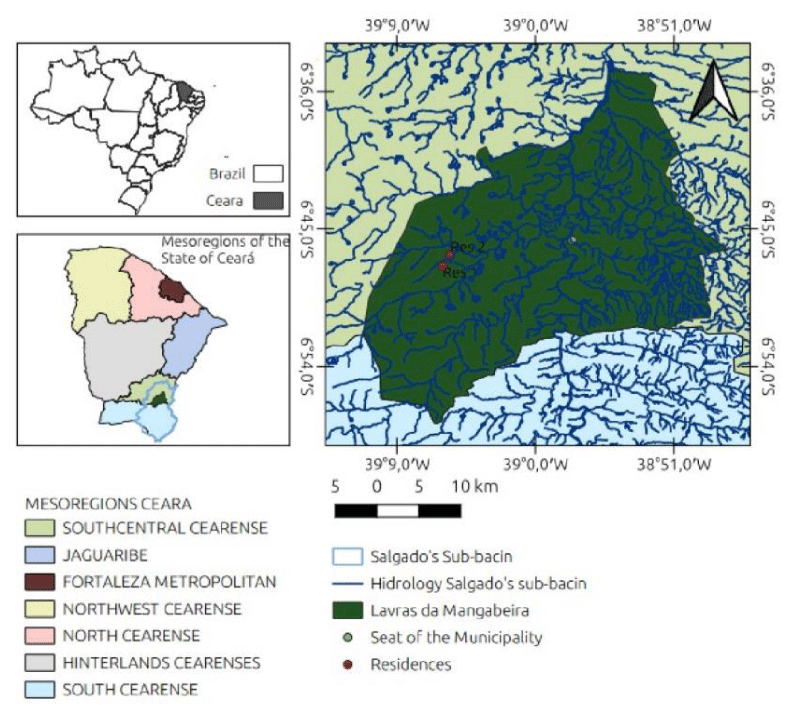
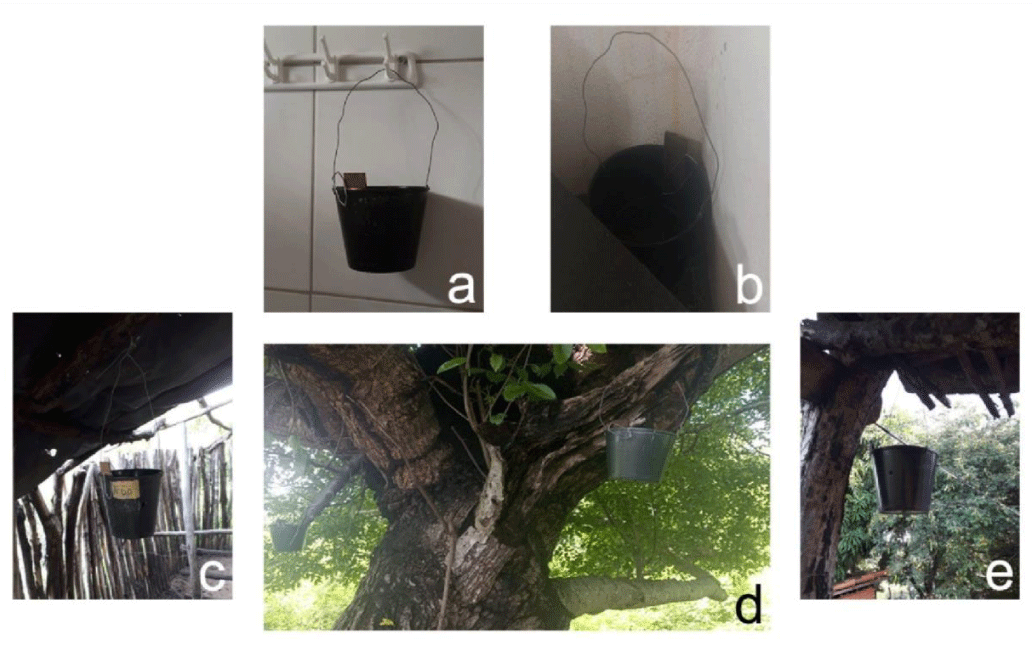
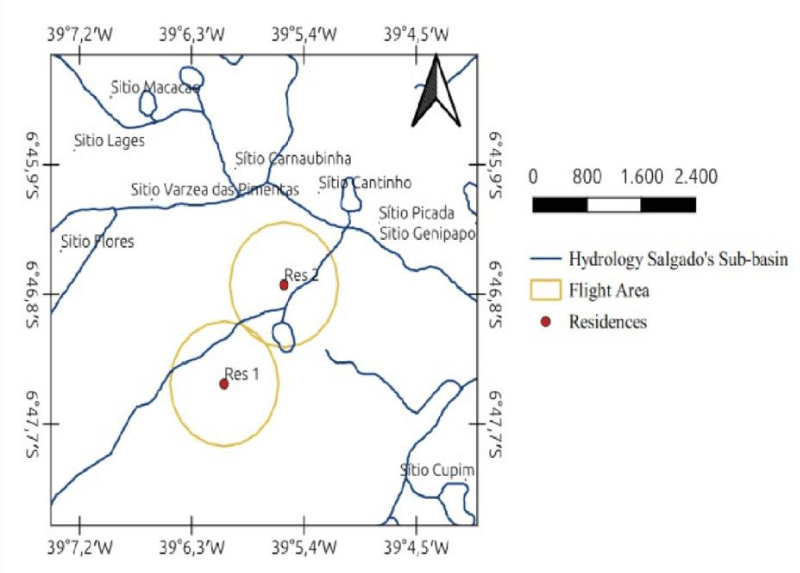
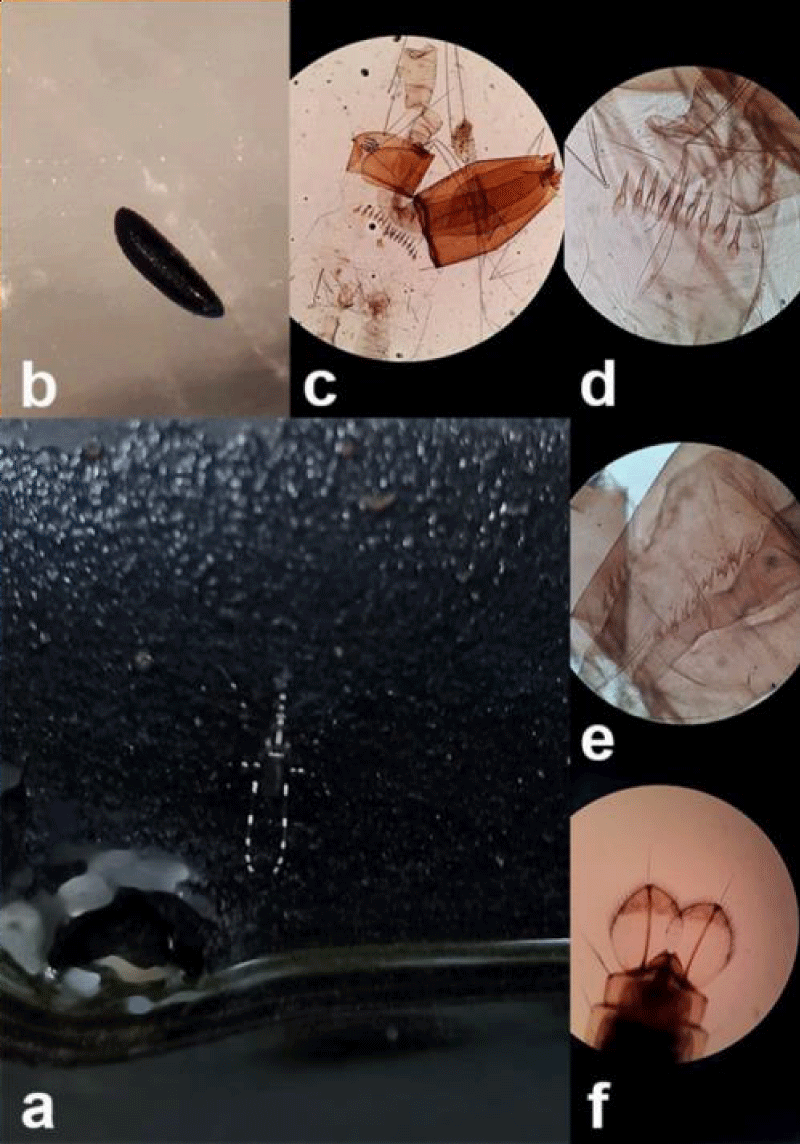
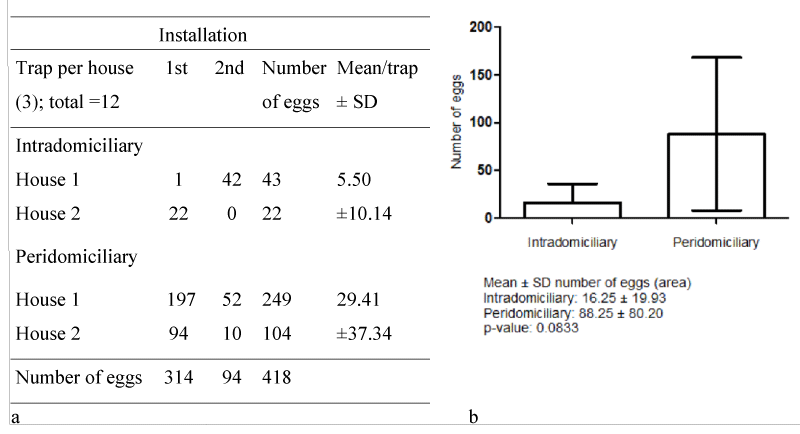
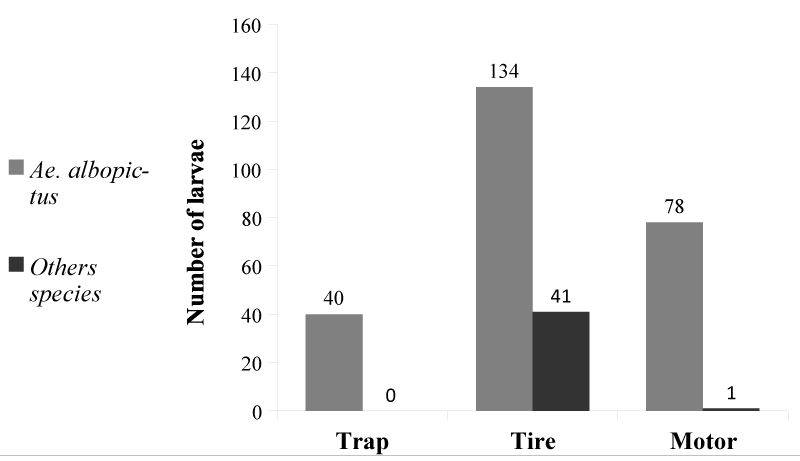


 Save to Mendeley
Save to Mendeley
